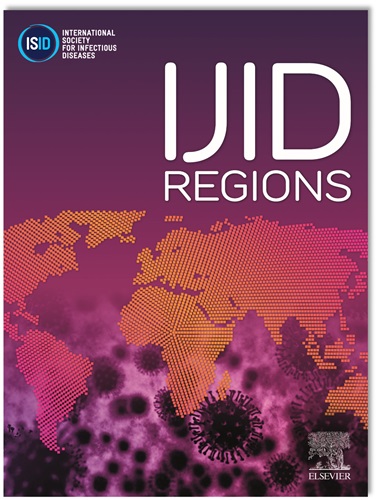Advances in vaccine-preventable diseases
IF 4.8
2区 医学
Q1 INFECTIOUS DISEASES
引用次数: 0
Abstract
Introduction
Vaccine-preventable diseases (VPDs) remain a significant cause of morbidity and mortality in children.
Methods
Recent advances in VPDs were reviewed.
Results
A modelling study showed that vaccinations accounted for 40% of the reduction of infant mortality during 1974-2024. Measles vaccines accounted for most of the averted mortality the past 50 years. During 2000-2023 alone, measles deaths were reduced by 87%, while vaccination averted 60.3 million deaths globally. Regarding HPV vaccine, a US study showed a 62% drop in cervical cancer deaths in women <25 years over the last decade, which is mainly attributed to the HPV vaccines. From 2022, the WHO recommends 1-dose HPV vaccination schemes in low-income countries to surpass financial barriers. After the introduction of this schedule, 6 m more girls were vaccinated globally in 2023. Regarding RSV, a meta-analysis of trials of RSV vaccination during pregnancy found a risk ratio of 0.64 (95% CI: 0.43-0.96) of medically attended lower respiratory tract infections (LRTIs) in infants whose mothers were vaccinated and a risk ratio of 0.37 (95% CI: 0.18-0.79) of severe LRTIs in infants of vaccinated mothers. The effectiveness against LRTIs was documented at day 90, 120, 150 and 180 after birth and against severe LRTIs at day 90, 120 and 150 after birth. The study also showed that RSV vaccination during pregnancy is associated with a vaccine effectiveness (VE) against antimicrobial use of 16.9% (95% CI: 1.4-29.4%). The third topic concerned the efficacy and safety of the Butantan-dengue vaccine in children followed for a mean of 3.7 years. VE against any dengue serotype was 64.6% in 2-6 years children and 70.6% in 7-17 years old children. VE was higher in those with past infection. VE against severe dengue was 89%. No difference in vaccine safety was noted between vaccinated and control groups. The next study concerned the reduction in antibiotic use that occurred after the introduction of pneumococcus conjugate and the Haemophilus influenzae vaccines in the vaccination program in India in mid-2010 as well as future gains to 2028 if vaccination rates were to increase. The authors reported that a coverage similar to the coverage of DTP3 vaccine would avert 61.4% of attributable antibiotic use compared with 0%. It is also expected that 90% coverage would reduce health inequalities in antibiotic demand in this country. Regarding influenza vaccine, the US FDA approved the self- or caregiver-administration of the nasal spray influenza vaccine. Lastly, a large observational study from Italy found that COVID-19 vaccination was associated with lower risk of long-COVID at 3, 6, and 12 months after infection, particularly in adolescents.
Discussion
In 2024 there have been considerable advances in major VPDs and vaccinations.
Conclusion
This overview showed the current knowledge on vaccinations in children globally.
疫苗可预防疾病方面的进展
疫苗可预防疾病(VPDs)仍然是儿童发病和死亡的一个重要原因。方法回顾近年来vpd的研究进展。结果一项模型研究表明,1974-2024年期间,疫苗接种对婴儿死亡率的降低有40%的贡献。麻疹疫苗在过去50年避免的死亡中占大部分。仅在2000-2023年期间,麻疹死亡人数就减少了87%,而全球接种疫苗避免了6 030万人死亡。关于人乳头瘤病毒疫苗,美国的一项研究表明,在过去十年中,25岁以下女性宫颈癌死亡率下降了62%,这主要归功于人乳头瘤病毒疫苗。从2022年起,世卫组织建议在低收入国家实施一剂HPV疫苗接种计划,以克服财政障碍。在引入这一时间表后,2023年全球接种疫苗的女孩增加了600万。关于RSV,一项对妊娠期RSV疫苗接种试验的荟萃分析发现,母亲接种疫苗的婴儿发生医学护理下呼吸道感染(LRTIs)的风险比为0.64 (95% CI: 0.43-0.96),母亲接种疫苗的婴儿发生严重下呼吸道感染的风险比为0.37 (95% CI: 0.18-0.79)。在出生后90,120,150和180天记录了对LRTIs的有效性,并在出生后90,120和150天记录了对严重LRTIs的有效性。该研究还表明,怀孕期间接种RSV疫苗与抗微生物药物使用的疫苗有效性(VE)相关,为16.9% (95% CI: 1.4-29.4%)。第三个主题涉及butantan -登革热疫苗在儿童中的有效性和安全性,平均随访3.7年。2-6岁儿童登革热血清型阳性率为64.6%,7-17岁儿童阳性率为70.6%。既往感染者VE较高。重症登革热的VE阳性率为89%。接种疫苗组和对照组在疫苗安全性方面没有差异。下一项研究涉及2010年中期在印度疫苗接种计划中引入结合肺炎球菌和流感嗜血杆菌疫苗后抗生素使用的减少,以及如果疫苗接种率增加,到2028年的未来收益。作者报告说,类似于百白破三联疫苗的覆盖率将避免61.4%的可归因抗生素使用,而0%。预计90%的覆盖率将减少该国抗生素需求方面的卫生不平等。关于流感疫苗,美国食品和药物管理局批准了自我或护理人员使用鼻腔喷雾流感疫苗。最后,意大利的一项大型观察性研究发现,COVID-19疫苗接种与感染后3、6和12个月的长期covid风险降低有关,特别是在青少年中。2024年,在主要vpd和疫苗接种方面取得了相当大的进展。本综述显示了目前全球儿童接种疫苗的知识。
本文章由计算机程序翻译,如有差异,请以英文原文为准。
求助全文
约1分钟内获得全文
求助全文
来源期刊
CiteScore
18.90
自引率
2.40%
发文量
1020
审稿时长
30 days
期刊介绍:
International Journal of Infectious Diseases (IJID)
Publisher: International Society for Infectious Diseases
Publication Frequency: Monthly
Type: Peer-reviewed, Open Access
Scope:
Publishes original clinical and laboratory-based research.
Reports clinical trials, reviews, and some case reports.
Focuses on epidemiology, clinical diagnosis, treatment, and control of infectious diseases.
Emphasizes diseases common in under-resourced countries.

 求助内容:
求助内容: 应助结果提醒方式:
应助结果提醒方式:


